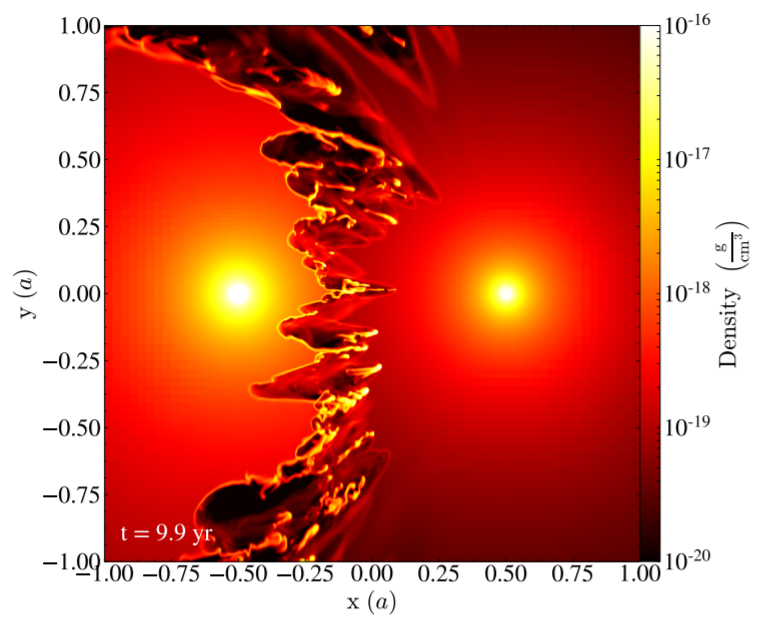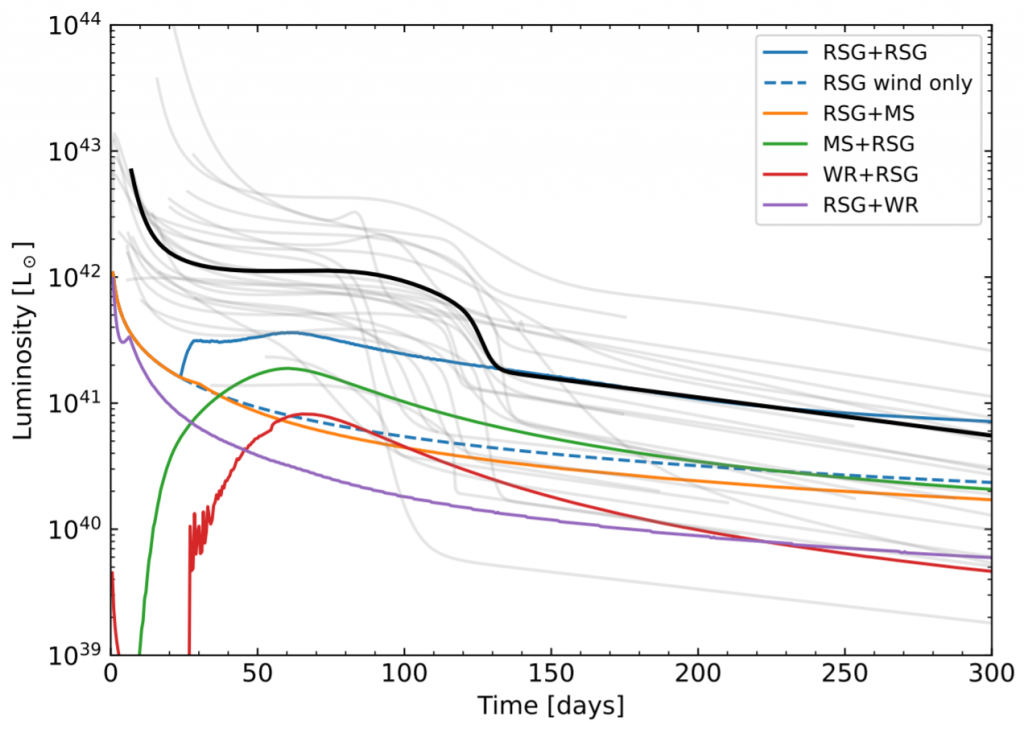When a core-collapse supernova explodes in a binary star system, the ejecta might encounter an overdense shell, where the stellar winds of the two stars previously collided. It is worth looking more closely at this colliding-wind shell, because it’s structure can be relatively well predicted based on the properties of the binary. Together with Diego and Petr, we investigated what observable effect for light curves and flash ionization arises from supernova hitting the colliding wind shell. In the process, we developed a semi-analytic model of CSM distribution in colliding-wind binaries calibrated by Diego’s 3D AMR simulations. We combined this model with a thin shell model for supernova shock interaction that is angularly dependent. The conclusion is that observable signatures still require relatively high wind mass-loss rates, which might not be completely realistic, and nearly equal-mass companions at large separations, which might be rare. Preprint available here.


